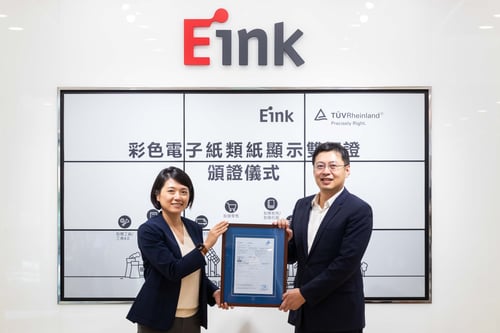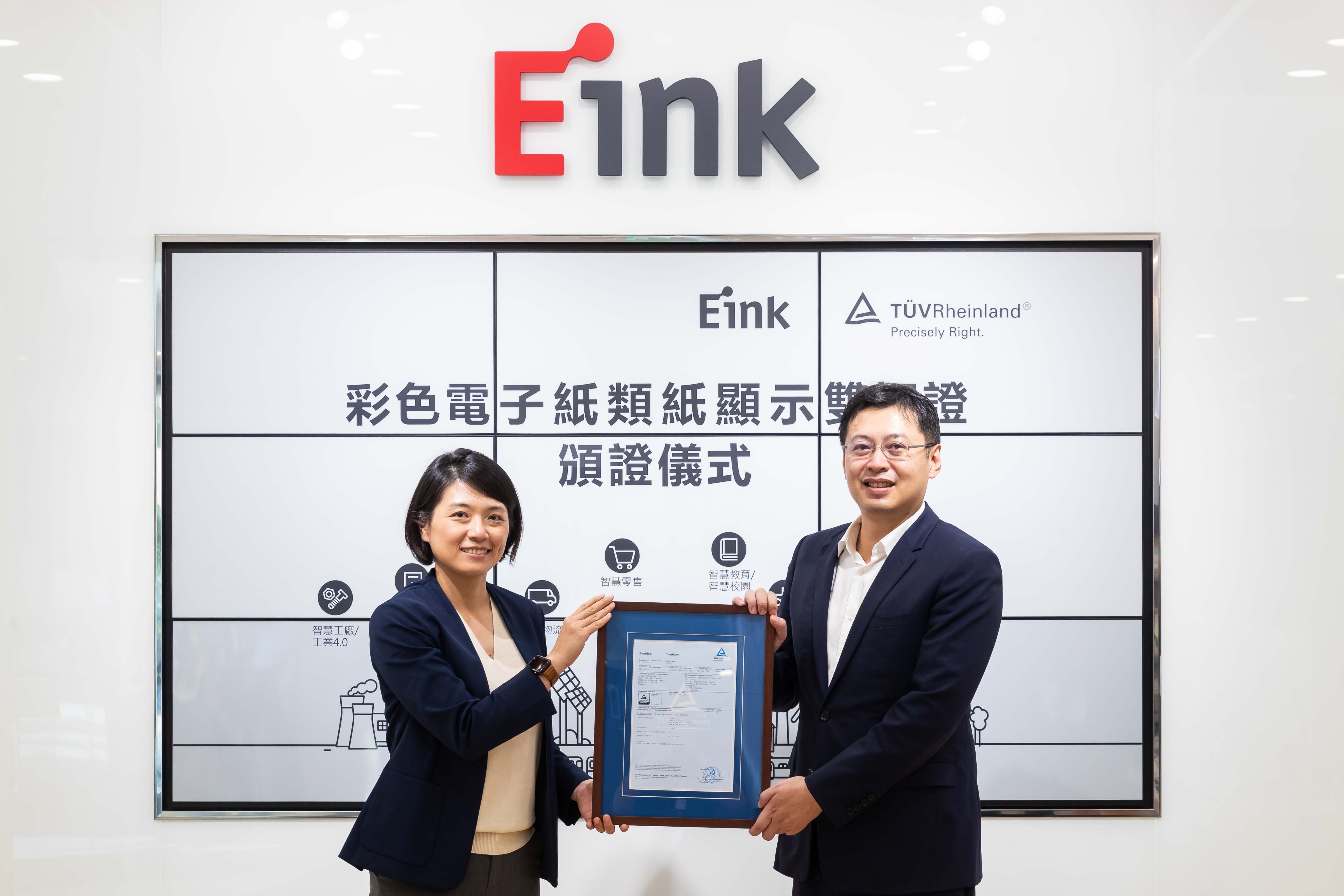Last week, E Ink announced that we had received the first “Paper Like Certification” for our E Ink Kaleido Plus displays.

So what does this mean to you, as a device user?
As we spend more time on digital devices, reading, writing and attending Zoom calls and schooling, there is an increased awareness of how screens affect our eye health. Traditional displays, found in your computer or phone, use LCD or OLED displays. These displays rely on backlighting for you to see the images displayed. Backlighting refers to the fact that behind the layers of the display are rows of lights that shine through the display material, and these lights are needed for you to see the images displayed. What this means from a practical sense, is that you are staring into lightbulbs – somewhat shielded lights, but lights nonetheless. This is why your eyes feel fatigued after spending a lot of time staring at your phone or on your computer.
In contrast, E Ink displays are reflective displays. They do not use backlights to display the image; instead, the image is displayed just like your paper – ambient light reflects off the display back to your eye. Many of our eReader displays do use a front light; however, front lights are aligned to the top or sides of the display panel and the light is guided down onto the display, and not directed at your eyes at all. And this is why people who use eReaders with E Ink technology say they have less eye fatigue, even when reading for hours.
However, anecdotal evidence is not enough, and current display measurement standards are aligned around traditional, emissive displays. So E Ink teamed with TÜV Rhineland to establish a set of standards that could be used for all reflective displays – E Ink or not. E Ink worked closely with TÜV over a period of 2 years to develop this standard, which evaluates the display against paper – the most widely known reflective “display” on the market. This standard is called the Paper Similarity Index (PSI).
Any display can be measured against the PSI standard – reflective displays like E Ink’s, or any LCD or OLED, or reflective LCD. The measurement gives an indicator of how paper-like a display really is – and how similar our eyes perceive that display while delivering digital content to viewers.
In E Ink’s case, we sell a module and not an end product. What does this mean? Well, a brand may implement our display module into their end product – for example, the Kindle uses our black and white Carta displays in their end device, Pocketbook and Onyx use Carta in some devices and have also integrated our color product, E Ink Kaleido Plus, into their devices. They buy our module and build the housing, electronics, software, etc., themselves. Given this, E Ink is testing our modules for PSI, and not an end device, such as an Amazon Kindle, or a Kobo Elipsa.
The PSI for E Ink Kaleido modules, the first color ePaper module tested by TÜV Reiland, is 86 – the highest of all comparable products on the market rated by TÜV Rheinland to date. We expect our black and white E Ink Carta modules will rank even higher on the PSI scale, as those displays do not have a color filter array on top, which can reduce reflectivity. As these results are confirmed, we will share them with our customers.

E Ink will continue to work with our customers, partners, and other agencies to ensure that we make the most eye-friendly, paper-like displays on the market, all with the performance and quality we have stood behind for the last 20 years.
Learn more at: www.eink.com and https://www.eink.com/news.html?type=releasedetail&id=2412&year=2021&page=1


Leave Comment